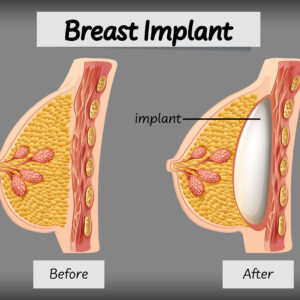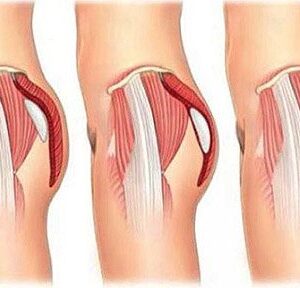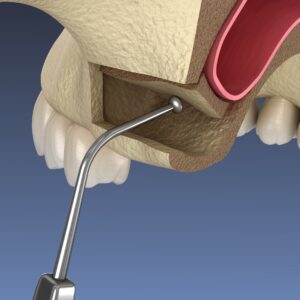Description
Familiarity with treatment
Liposuction is a commonly used technique for breast reduction in men with gynecomastia. Here is an explanation of the procedure based on the search results:
Treating Gynecomastia with Liposuction: Liposuction is an effective method for treating gynecomastia, particularly when excess fatty tissue is the primary cause. Advances in liposuction technology have led to a wider range of less invasive techniques, making it a popular choice for male breast reduction 1.
Procedure Steps: The steps involved in gynecomastia surgery with liposuction typically include the following:
Anesthesia: Medications are administered to ensure your comfort during the procedure. The options include intravenous sedation or general anesthesia, and your surgeon will recommend the best option for you 2.
Liposuction Technique: Liposuction is performed using a thin, hollow tube called a cannula. Several small incisions are made, and the cannula is inserted to remove excess fat from the chest area. The cannula is moved back and forth in a controlled motion to loosen the fat, which is then suctioned out of the body 2.
Combination with Excision: In some cases, liposuction may be combined with excision techniques. Excision involves the surgical removal of excess glandular tissue and may be necessary if there is a significant amount of glandular tissue present.
Benefits of Liposuction: Liposuction offers several advantages for male breast reduction:
Less Invasive: Liposuction techniques have become less invasive over time, resulting in smaller incisions, reduced scarring, and shorter recovery periods 1.
Improved Contour: Liposuction helps to sculpt the chest area, removing excess fat and creating a more defined and masculine contour.
Minimal Downtime: Recovery time after liposuction is typically shorter compared to other surgical techniques, allowing individuals to return to their normal activities sooner 3.
Who is it suitable for?
Breast reduction surgery with liposuction is suitable for men with gynecomastia who meet certain criteria. Here is a summary of the suitability based on the search results:
Excess Fat and Glandular Tissue: Liposuction is effective for reducing excess fat and glandular tissue in the chest area. It is suitable for individuals who have gynecomastia primarily caused by an accumulation of fat and glandular tissue.
Good General Health: Candidates for breast reduction surgery should be in good overall health. It’s important to undergo a medical evaluation to ensure that you are fit for the procedure.
Stable Weight: It is generally recommended that candidates have a stable weight before undergoing breast reduction surgery. Significant weight fluctuations can affect the long-term results of the procedure.
Realistic Expectations: It’s important to have realistic expectations about the outcomes of the surgery. While liposuction can significantly reduce the size of the breasts and improve the chest contour, individual results may vary. It’s essential to have a thorough consultation with a qualified plastic surgeon to discuss your goals and expectations.
Confirmation of Gynecomastia: Before undergoing surgery, it’s important to confirm the presence of gynecomastia and rule out other conditions. A proper physical examination and evaluation by a qualified plastic surgeon are necessary to diagnose gynecomastia and determine the most appropriate treatment approach.
Who is it not suitable for?
Based on the search results, there are certain cases where breast reduction with liposuction may not be suitable for men with gynecomastia. Here are some factors to consider:
Excess Glandular Tissue: Liposuction primarily targets excess fat in the chest area. If gynecomastia is primarily caused by an excess of glandular tissue rather than fat, liposuction alone may not be sufficient. In such cases, surgical excision of the glandular tissue may be necessary.
Skin laxity: Liposuction is effective for removing excess fat, but it may not address significant skin laxity or sagging. If there is a considerable amount of loose skin in the chest area, additional surgical techniques, such as skin excision, may be required to achieve the desired results.
Severe Gynecomastia: In cases of severe gynecomastia where there is a significant amount of excess breast tissue and skin, liposuction alone may not be enough. Surgical excision techniques, in combination with liposuction, may be necessary to achieve optimal results.
Unrealistic Expectations: It’s important to have realistic expectations about the outcomes of the surgery. Liposuction can significantly reduce the size of the breasts and improve the chest contour, but individual results may vary. It’s crucial to have a thorough consultation with a qualified plastic surgeon to discuss your goals and expectations.
Advantages
Breast reduction in men with gynecomastia using liposuction offers several advantages. Here are some of the benefits based on the search results:
Improved Appearance: Gynecomastia surgery with liposuction can help restore a more masculine chest contour by reducing excess fat and glandular tissue. It can create a flatter and more sculpted chest, enhancing the overall appearance and improving self-confidence.
Enhanced Self-Confidence: Gynecomastia can cause emotional distress and self-consciousness. By reducing the size of the breasts, liposuction can help individuals feel more confident in social situations, improve body image, and enhance self-esteem 1.
Reduced Discomfort: Enlarged breasts can cause physical discomfort, such as pain, tenderness, and irritation. Breast reduction with liposuction can alleviate these symptoms by removing excess tissue and reducing the weight and size of the breasts.
Minimally Invasive: Liposuction techniques for gynecomastia surgery have become less invasive over time. This means smaller incisions, reduced scarring, and shorter recovery periods compared to more extensive surgical techniques 2.
Shorter Recovery Time: Recovery time after liposuction for gynecomastia is typically shorter compared to other surgical techniques. This allows individuals to return to their normal activities sooner.
Improved Physical Comfort: Excess fat in the chest area can make it challenging to engage in physical activities or exercise comfortably. Liposuction can remove this excess fat, allowing individuals to participate in activities without the discomfort associated with gynecomastia.
Permanent Results: The results of gynecomastia surgery with liposuction are generally permanent. Once the excess fat and glandular tissue are removed, they do not typically return. However, maintaining a stable weight and a healthy lifestyle is important for long-term results 3.
Complications
While breast reduction in men with gynecomastia using liposuction is generally safe and effective, there are potential complications associated with the procedure. Here are some of the complications to be aware of:
Bleeding: Like any surgical procedure, there is a risk of bleeding during or after the surgery. Your surgeon will take precautions to minimize bleeding, but it’s important to be aware of this potential complication.
Infection: Infection is a possible complication after any surgical procedure. Your surgeon will provide instructions on how to care for the incision sites and minimize the risk of infection. It’s important to follow these instructions closely.
Changes in Sensation: Temporary or permanent changes in nipple or breast sensation may occur after gynecomastia surgery with liposuction. This can include increased or decreased sensitivity or numbness in the treated area.
Asymmetry: Achieving perfect symmetry in the chest area is challenging, and there is a possibility of slight asymmetry after the surgery. Your surgeon will make every effort to achieve a balanced and symmetrical result.
Scarring: While liposuction incisions are typically small, there is still a risk of scarring. Most scars fade over time and become less noticeable, but individual healing and scar formation can vary.
Fluid Accumulation: Fluid accumulation, known as seroma, can occur after surgery. Your surgeon may place drains to prevent fluid buildup, or they may need to be aspirated if it occurs. Following your surgeon’s postoperative instructions can help minimize this risk.
Skin Irregularities: In some cases, liposuction may result in uneven or irregular skin contours. This can include dimpling, waviness, or uneven texture. Your surgeon will assess your skin elasticity and discuss the potential for skin irregularities during the consultation.
Allergic Reactions: While rare, allergic reactions to anesthesia or other medications used during the procedure are possible. It’s important to inform your surgeon about any known allergies or sensitivities you have.
preoperative care
Preoperative care for breast reduction in men with gynecomastia using liposuction involves several important steps. While the specific preoperative instructions may vary depending on the surgeon and individual circumstances, here are some general aspects to consider based on the search results:
Consultation and Evaluation: The first step is to schedule a consultation with a qualified plastic surgeon who specializes in gynecomastia surgery. During this consultation, the surgeon will evaluate your condition, discuss your goals and expectations, and determine if you are a suitable candidate for liposuction.
Medical Evaluation: Before the surgery, you may undergo a medical evaluation to assess your overall health and fitness for the procedure. This evaluation may include a review of your medical history, physical examination, and possibly some laboratory tests.
Discussion of Expectations: It’s important to have a thorough discussion with your surgeon about your desired outcomes and expectations from the surgery. This will help ensure that you have realistic expectations and that the surgeon understands your goals.
Preparation Instructions: Your surgeon will provide specific instructions to prepare for the surgery. This may include guidelines on medications to avoid, dietary restrictions, and any necessary lifestyle modifications leading up to the procedure.
Smoking and Medication: It’s important to inform your surgeon about any medications you are currently taking, including over-the-counter drugs and supplements. You may be advised to stop certain medications, such as blood thinners, prior to the surgery. Additionally, if you smoke, your surgeon may recommend quitting or at least refraining from smoking for a certain period before and after the surgery, as smoking can interfere with the healing process.
Fasting: You will likely be instructed to fast for a certain period before the surgery. This is to ensure that your stomach is empty during the procedure, reducing the risk of complications related to anesthesia.
Arrangements for Recovery: It’s important to make arrangements for your recovery period. This may include arranging for someone to drive you home after the surgery, ensuring you have someone to assist you during the initial recovery phase, and preparing your home with necessary supplies for post-operative care.
Follow-Up Appointments: Your surgeon will schedule follow-up appointments to monitor your healing progress and address any concerns or questions you may have during the recovery period.
Postoperative care
Postoperative care following breast reduction in men with gynecomastia using liposuction is crucial for optimal healing and recovery. While specific postoperative instructions may vary depending on the surgeon and individual circumstances, here are some general aspects to consider based on the search results:
Follow Surgeon’s Instructions: It’s essential to carefully follow the postoperative instructions provided by your plastic surgeon. These instructions may include guidelines on wound care, medication usage, activity restrictions, and wearing compression garments.
Wound Care: Proper wound care is important to prevent infection and promote healing. Your surgeon will provide specific instructions on how to clean and care for the incision sites. It’s important to keep the incisions clean and dry as instructed.
Compression Garments: Your surgeon may recommend wearing a compression garment or vest after the surgery. These garments help reduce swelling, provide support to the treated area, and aid in the healing process. Follow your surgeon’s instructions regarding the duration and frequency of wearing the compression garment.
Pain Management: It’s normal to experience some discomfort or pain after the surgery. Your surgeon may prescribe pain medication or recommend over-the-counter pain relievers to manage any discomfort. Follow the prescribed dosage and instructions for pain medication.
Activity Restrictions: Your surgeon will provide guidelines on activity restrictions during the recovery period. It’s important to avoid strenuous activities, heavy lifting, and exercise for the recommended duration to allow proper healing. Gradually reintroduce physical activities as advised by your surgeon.
Follow-Up Appointments: Attend all scheduled follow-up appointments with your surgeon. These appointments allow your surgeon to monitor your healing progress, remove any drains if necessary, and address any concerns or questions you may have.
Scar Care: Your surgeon may provide instructions on scar care to minimize scarring. This may include applying topical creams or ointments, avoiding sun exposure, and massaging the scars as recommended.
Maintain a Healthy Lifestyle: Following a healthy lifestyle, including a balanced diet and regular exercise, can contribute to optimal healing and long-term results. Maintain a stable weight to help preserve the results of the surgery.






Reviews
There are no reviews yet.